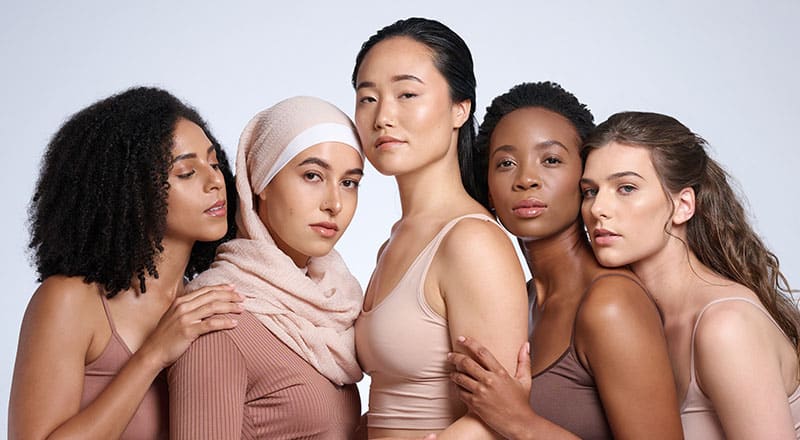Why Inclusivity in Modeling Matters More Than Ever
Modeling has long been regarded as a reflection of societal ideals and aspirations. From glossy magazine covers to high-profile runway shows, the industry has shaped cultural norms around beauty, fashion, and identity. However, in recent years, a much-needed shift has emerged a movement towards inclusivity that challenges outdated stereotypes and embraces diversity in all its forms. 
Here’s why inclusivity in modeling matters now more than ever.
Reflecting the Real World
The global audience consuming fashion and media is incredibly diverse, encompassing various ethnicities, body types, genders, abilities, and age groups. Yet, for decades, the modeling industry largely catered to narrow, often unattainable standards of beauty. This disconnect alienated vast segments of the population, perpetuating harmful self-esteem issues and unrealistic expectations.
Authentic Representation
Ethnic Diversity: Including models from diverse racial and ethnic backgrounds ensures representation for marginalized communities, fostering cultural pride and reducing stereotypes.
Body Positivity: Featuring models of all shapes and sizes normalizes different body types, breaking the cycle of body shaming and promoting self-acceptance.
Age Inclusivity: Showcasing older models celebrates timeless beauty and challenges the notion that youth is the only marker of attractiveness.
Disability Representation: Including models with disabilities not only reflects reality but also helps to dismantle biases around physical and mental differences.
When people see themselves reflected in media, they feel validated and included. Brands that adopt inclusive practices are more likely to resonate with diverse audiences, fostering loyalty and trust.
Driving Social Change
The modeling industry holds immense cultural influence. It doesn’t just sell products; it sells dreams, lifestyles, and values. By championing inclusivity, the industry can play a pivotal role in driving social change.
Challenging Stereotypes
- Gender Fluidity: Casting non-binary and transgender models helps to challenge traditional notions of gender and promotes broader acceptance of gender diversity.
- Cultural Appreciation: Celebrating traditional attire and hairstyles from different cultures—without appropriating them—can educate audiences and foster mutual respect.
By breaking down stereotypes, the modeling industry can help dismantle systemic biases and promote equity. This is especially crucial in today’s interconnected world, where inclusivity has become a cornerstone of social progress.
Economic and Business Impacts
Inclusivity is not just an ethical imperative; it’s also a business opportunity. Brands that embrace diversity often outperform their peers by tapping into a broader customer base and building stronger emotional connections with consumers.
Expanding Market Reach
- Global Appeal: A diverse cast of models allows brands to appeal to international markets, reflecting the local cultures and identities of their target demographics.
- Millennial and Gen Z Consumers: Younger generations are particularly drawn to brands that prioritize inclusivity and social responsibility. Inclusive campaigns can increase brand loyalty among these socially conscious groups.
Higher Engagement and Sales
Studies have shown that inclusive advertising leads to higher engagement rates and better ROI. For instance, campaigns featuring plus-size or racially diverse models often receive widespread acclaim on social media, translating to increased visibility and sales.
The Path Forward
While progress has been made, there is still much work to be done. True inclusivity requires more than token representation; it demands systemic change within the modeling industry.
Here are some key steps to sustain this momentum:
- Diversify Leadership: The decision-makers—from casting directors to agency executives—must reflect the diversity they aim to promote. Representation at the top ensures that inclusivity is prioritized throughout the process.
- Long-Term Commitment: Inclusivity must move beyond trends and become a permanent ethos. Brands should integrate diversity into their core values and operational strategies.
- Educate and Empower: Workshops and training sessions can help stakeholders understand the importance of inclusivity and equip them with the tools to implement it effectively.
- Collaborate with Advocacy Groups: Partnering with organizations that champion diversity can provide valuable insights and resources to accelerate change.
Conclusion
Inclusivity in modeling is no longer a mere aspiration; it is an essential component of a modern, equitable society. By reflecting the real world, driving social change, and embracing its economic potential, the modeling industry has the power to redefine beauty standards and create a more inclusive cultural narrative. As consumers, brands, and advocates, we must continue to demand and support these changes, ensuring that the industry’s evolution is both meaningful and enduring.
Sources
- The Power of Diversity in Advertising
- How Inclusive Marketing Drives Results
- The Rise of Body Positivity in Fashion
- Why Representation Matters
- The Business Case for Diversity
- Breaking Stereotypes in Media
- Inclusivity Trends in Fashion
- How Gen Z Is Redefining Inclusivity
- Disability Representation in Media
- Cultural Representation and Appreciation


















































![[ℕ𝕖𝕧𝕖𝕣] 𝕊𝕖𝕝𝕝 𝕐𝕠𝕦𝕣 𝔹𝕚𝕥𝕔𝕠𝕚𝕟 - And Now What.... Pray To The God Of Hopium?](https://cdn.bulbapp.io/frontend/images/79e7827b-c644-4853-b048-a9601a8a8da7/1)






